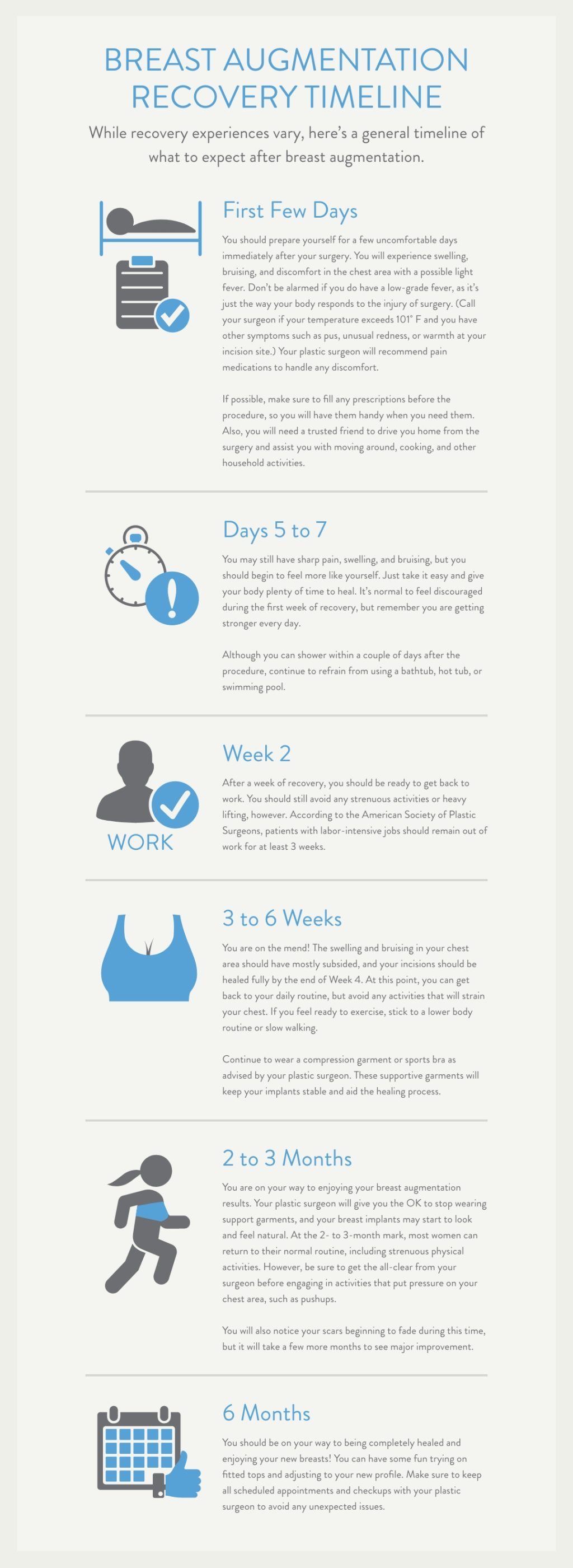There are many reasons you may opt for a breast augmentation procedure. For most women, it’s about adding volume and shape to breasts affected by aging, genetics, or pregnancy. When you don’t like what you see in the mirror or don’t feel comfortable in your skin, it can affect your body confidence and bring on feelings of insecurity. Our team is here to restore your body confidence through breast augmentation.
The recovery process for breast augmentation is as important as the procedure itself. Although there is no one-size-fits-all recovery process, there are some things you should know about what to expect during and after your breast augmentation.
How Does Breast Augmentation Work?
During the procedure, your plastic surgeon will create an incision in one of 2 places: in the crease under your breast or around your nipple. They will then place a saline or silicone gel implant behind your breast tissue or behind the chest muscle. Once the implant is placed, the incision is closed, and your procedure is complete.
Your breast augmentation is customizable, and you will have the opportunity to pick your breast implant shape, size, material, and profile. You can decide to go just 1 or 2 sizes larger for a natural appearance or choose bigger implants for a sexy, voluptuous shape. You’ll make these implant decisions in concert with your plastic surgeon, who will advise you on the best options for your body type and goals.
We use VECTRA® 3D imaging technology to help you visualize the results of your breast enhancement. You can also see the possibilities by viewing the before and after images of other patients.

How To Make the Most of Your Breast Augmentation Results
You’ve devoted a lot of time and effort to your breast augmentation, so it’s natural you’ll want to get the best results possible. Here are a couple of tips for optimizing your results:
Maintain a healthy diet—While there is no evidence that your diet can impact your breast augmentation results, some studies show that vitamin-rich food can keep your skin elastic and supple. Strong, healthy skin will keep your breasts firm, minimize sagging, and enable you to enjoy your breast augmentation results for a long time.
Massage your breasts—Daily breast massages, beginning about a week after surgery, can help with healing after the procedure and minimize the appearance of scars. Massaging your skin helps blood flow to areas that need to heal, enhancing your recovery. Gently massaging your incisions also helps reduce the formation of scars.
Recovering from breast augmentation can be challenging, but being prepared for the recovery process is an important strategy. Don’t hesitate to reach out to your plastic surgeon if you have any concerns or questions about the recovery process.
Take the Next Step
Our team is committed to helping women achieve amazing breast augmentation results. If you are ready for youthful, shapely breasts, request a consultation or call us at (585) 272-0700 to schedule an appointment.





Leave a Reply